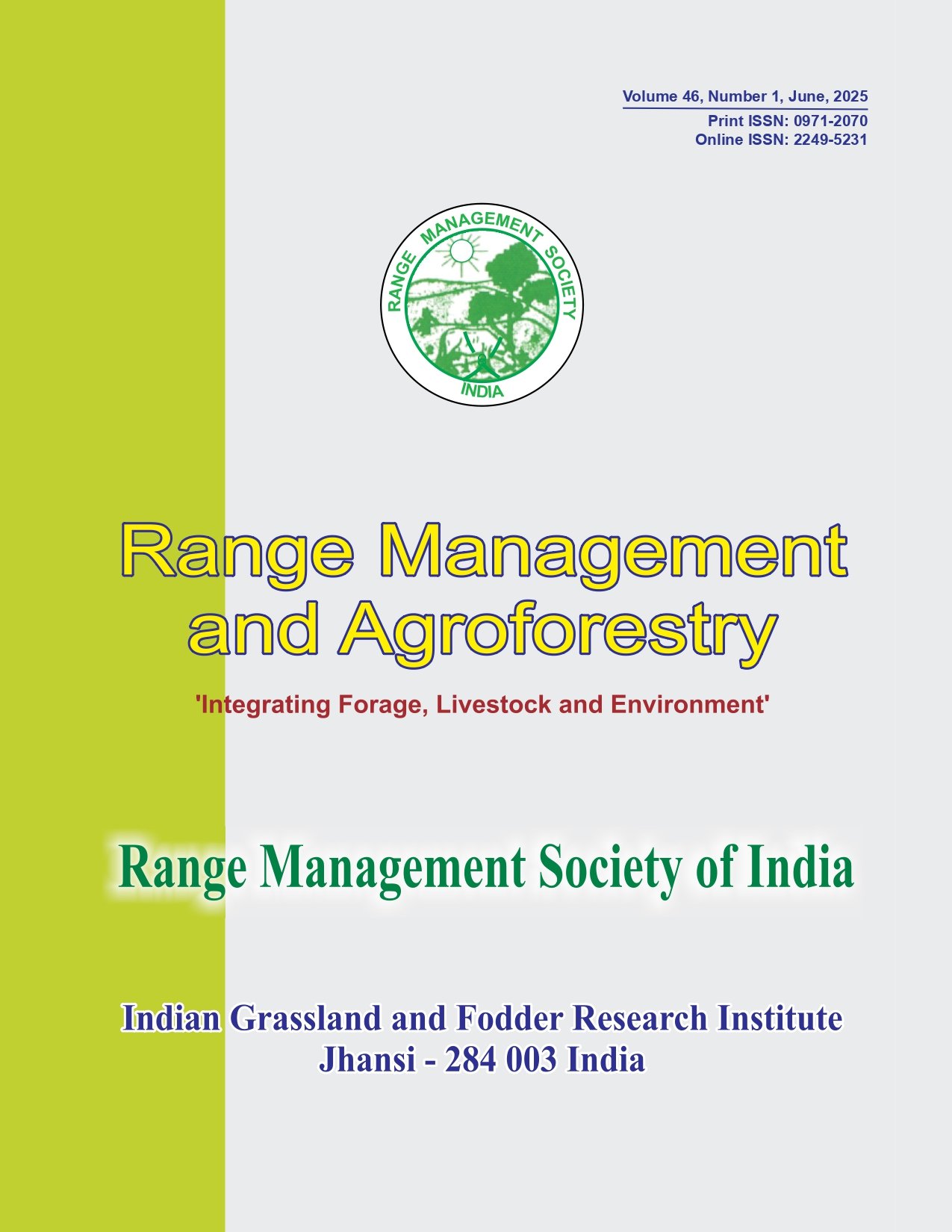Effect of seasonal variation in biochemical composition of leaves of fodder trees prevalent in the mid-hill region of Himachal Pradesh
Keywords:
Mid-Himalayas, Nutritional profile, Seasonal variation, Tree foliageAbstract
Fodder tree leaves from eight different species prevalent in mid-hill region of Himachal Pradesh were collected at two month intervals throughout the year to assess seasonal variation in nutritional profile. Arratocarpus lakoocha (22.88%) exhibited highest crude protein content during March while lowest value was observed during January for Albizzia chinensis (5.83%). In Albizzia chinensis, crude fiber (34.73%) was highest during January, while Morus alba (18.0%) exhibited least content during November. In Morus alba, ash content (16.90%) was highest during September, whereas Albizzia lebbek had the lowest ash content (4.10%) during the month of January. Arratocarpus lakoocha exhibited minimum ether extract (1.00%) during September and January whereas, maximum level was observed during the month of May and July in Albizzia lebbek (4.90%). Cell content was highest in Arratocarpus lakoocha (61.00%) during May, whereas, least values were observed during the month of September and November in Bambusa arundinacea (30.20%). Bambusa arundinacea exhibited maximum neutral detergent fiber (70.20%) and acid detergent fiber (57.80%) during the month of January, while Morus alba exhibited minimum level of neutral detergent fiber (53.00%) and acid detergent fiber (34.00%) during March. In Celtis australis hemi-cellulose (25.60%) was higher during September, while least content was recorded during the month of July in Grewia oppositifolia (8.00%). It was observed that the NDF, ADF and hemicellulose contents were increased, while crude protein, ether extract, ash cell contents were decreased in advancing months. The study revealed that Morus alba and Grewia oppsitifolia are excellent source of fodder in mid Himalayan region which retained appreciable amount of nutrients in leaves.




